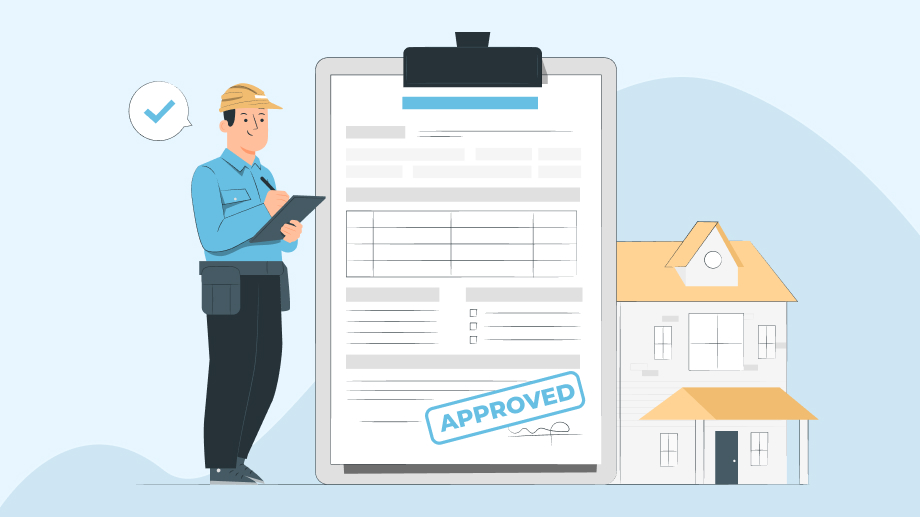Annual property inspection is a cornerstone of effective building maintenance. It is usually done to maintain property value and enhance tenant satisfaction. For landlords, these inspections are key to protecting their investments and addressing maintenance needs before they become costly repairs.
The past few years have brought technological advancements in property inspection techniques. Tools like smart forms, QR codes and digital checklists are some of the newer ways to meet evolving compliance standards.
This blog will guide you through the key components of property inspections, and help you stay ahead while meeting the industry demands.
What is Property Inspection?
A rental inspection is more than just a routine walkthrough; it’s a meticulous evaluation of a property’s condition. The process involves an assessment of every aspect of the property—from the foundation and roof to plumbing, electrical systems, and beyond.
The primary aim of an annual inspection is threefold-
Ensure Compliance with Safety and Maintenance Standards
A thorough inspection ensures the property meets safety regulations and maintenance benchmarks, protecting tenants and landlords alike from potential hazards.
Monitor Lease Agreement Adherence
Inspections help confirm that tenants are honoring lease terms, such as refraining from unauthorized modifications, adhering to pet policies, or maintaining cleanliness and care of the property.
Prevent Escalating Issues
Identifying minor concerns—like a small leak or an aging HVAC system—before they develop into significant problems saves time and money while preserving property value.
Why Are Rental Inspections Essential for Property Management?
- Enhancing Resident Experience: Well-maintained properties improve tenant satisfaction, leading to longer leases, timely payments, and positive referrals.
- Protecting Investments: Regular inspections prevent small issues from escalating, preserving property integrity and maximizing ROI.
- Ensuring Safety: Identifying and addressing safety hazards keeps tenants secure and minimizes legal risks.
- Predictive Maintenance: Proactive inspections help anticipate issues, saving time, money, and minimizing disruptions.
- Preserving Property Value: Routine maintenance through inspections retains and enhances a property’s market value.
With the integration of smart property management tools and stricter regulatory guidelines, inspections in 2025 are no longer limited to manual checks. Digital inspection platforms, IoT-enabled monitoring devices, and data-driven insights empower property managers to conduct more accurate and efficient evaluations.
How allGeo Can Revolutionize Your Property Inspection With QR Codes & Digital Checklists
One of the most effective ways to streamline property inspections is by integrating QR codes into your workflow. Assigning unique QR codes to specific areas of a property, such as units, common areas, or mechanical rooms, simplifies the inspection process.
Upon scanning a QR code, inspectors can access a tailored checklist for that specific area, ensuring a thorough evaluation and maintaining accountability for property standards.
1. Improved Workflow and Tracking
Using QR codes in property inspections enhances workflow efficiency and tracking capabilities. By scanning the codes at designated inspection points, property managers can ensure that inspections are carried out according to established standards.
The flexibility of QR codes allows customization for specific workflows, ensuring the system fits seamlessly into your operations. Additionally, these codes can integrate with digital checklists to guide inspectors step-by-step, ensuring no detail is overlooked.
2. Increased Accountability for Inspectors
QR codes hold inspectors accountable by ensuring that every required checkpoint is scanned and assessed. This creates a transparent system for monitoring the quality and thoroughness of inspections. Reports generated from these inspections can also serve as training tools or as recognition for outstanding performance, fostering a culture of continuous improvement.
3. Comprehensive Documentation
QR codes facilitate the creation of detailed inspection records. Each scan generates a timestamped log that can be cloud stored for compliance and auditing purposes. These records provide a full history of property conditions, inspections, and any maintenance actions taken, ensuring complete transparency and accountability.
4. Visual Evidence for Accuracy
QR code-enabled inspections can include visual documentation. Inspectors can attach photos in mobile forms to provide visual evidence of property conditions or completed maintenance tasks. This feature improves the accuracy of assessments and increases transparency, offering property managers and clients a clear view of inspection results.
Building the Ultimate Annual Property Inspection Checklist
A comprehensive property inspection checklist should cover the following areas:
- Structural Integrity: Inspect the foundation, walls, roof, windows, and doors for any signs of wear, damage, or leaks.
- Mechanical Systems: Evaluate HVAC systems, plumbing, and electrical setups for efficiency and compliance with safety codes.
- Interior Features: Check flooring, walls, appliances, and fixtures for functionality and cleanliness.
- Safety Protocols: Ensure smoke detectors, carbon monoxide alarms, fire extinguishers, and emergency exits meet current safety standards.
- Lease Compliance: Confirm tenants are following lease agreements, such as avoiding unauthorized alterations or subletting.
Conclusion
Property inspections are a vital component of successful property management, ensuring safety, compliance, and the preservation of property value. By leveraging technology, inspections can become more efficient, accurate, and transparent. These advancements not only streamline workflows but also foster accountability and improve tenant satisfaction.
A comprehensive annual inspection checklist and the integration of innovative solutions, property managers can proactively address issues, enhance operational efficiency, and meet the evolving demands of the industry. In 2025 and beyond, allGeo can position property managers for long-term success. Schedule a demo to know how.



